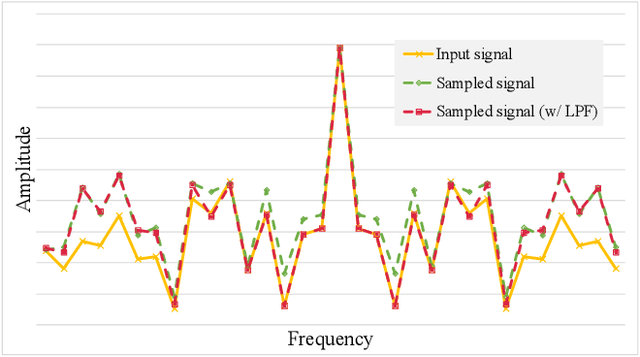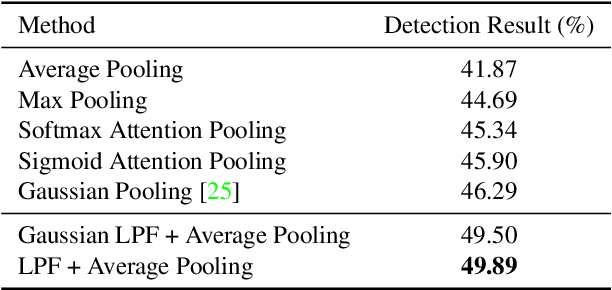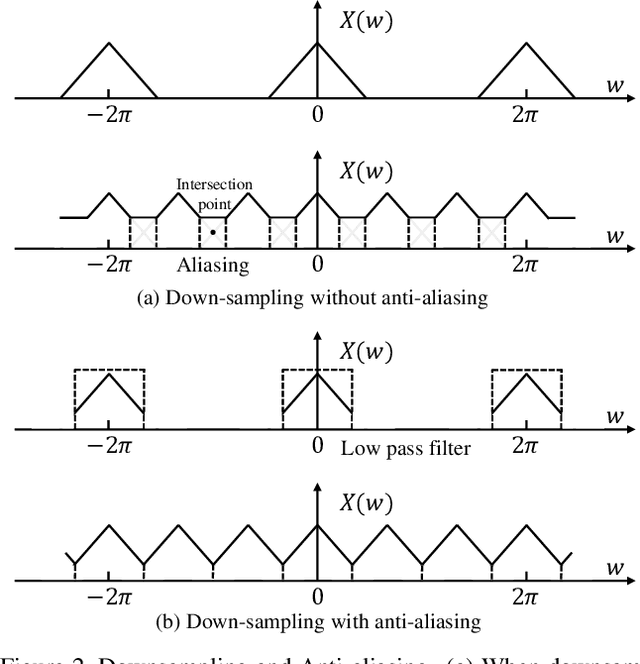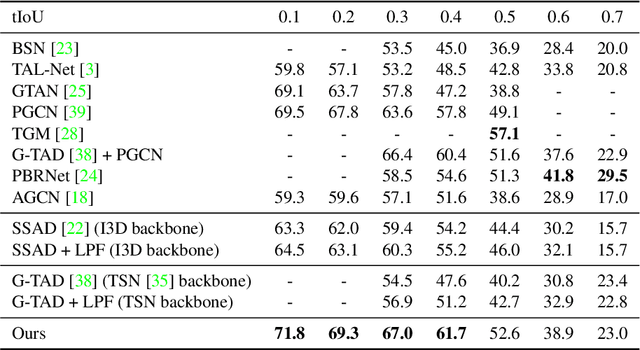Cece Jin
Low Pass Filter for Anti-aliasing in Temporal Action Localization
Apr 23, 2021



Abstract:In temporal action localization methods, temporal downsampling operations are widely used to extract proposal features, but they often lead to the aliasing problem, due to lacking consideration of sampling rates. This paper aims to verify the existence of aliasing in TAL methods and investigate utilizing low pass filters to solve this problem by inhibiting the high-frequency band. However, the high-frequency band usually contains large amounts of specific information, which is important for model inference. Therefore, it is necessary to make a tradeoff between anti-aliasing and reserving high-frequency information. To acquire optimal performance, this paper learns different cutoff frequencies for different instances dynamically. This design can be plugged into most existing temporal modeling programs requiring only one additional cutoff frequency parameter. Integrating low pass filters to the downsampling operations significantly improves the detection performance and achieves comparable results on THUMOS'14, ActivityNet~1.3, and Charades datasets. Experiments demonstrate that anti-aliasing with low pass filters in TAL is advantageous and efficient.
SSD-GAN: Measuring the Realness in the Spatial and Spectral Domains
Dec 15, 2020



Abstract:This paper observes that there is an issue of high frequencies missing in the discriminator of standard GAN, and we reveal it stems from downsampling layers employed in the network architecture. This issue makes the generator lack the incentive from the discriminator to learn high-frequency content of data, resulting in a significant spectrum discrepancy between generated images and real images. Since the Fourier transform is a bijective mapping, we argue that reducing this spectrum discrepancy would boost the performance of GANs. To this end, we introduce SSD-GAN, an enhancement of GANs to alleviate the spectral information loss in the discriminator. Specifically, we propose to embed a frequency-aware classifier into the discriminator to measure the realness of the input in both the spatial and spectral domains. With the enhanced discriminator, the generator of SSD-GAN is encouraged to learn high-frequency content of real data and generate exact details. The proposed method is general and can be easily integrated into most existing GANs framework without excessive cost. The effectiveness of SSD-GAN is validated on various network architectures, objective functions, and datasets. Code will be available at https://github.com/cyq373/SSD-GAN.
 Add to Chrome
Add to Chrome Add to Firefox
Add to Firefox Add to Edge
Add to Edge